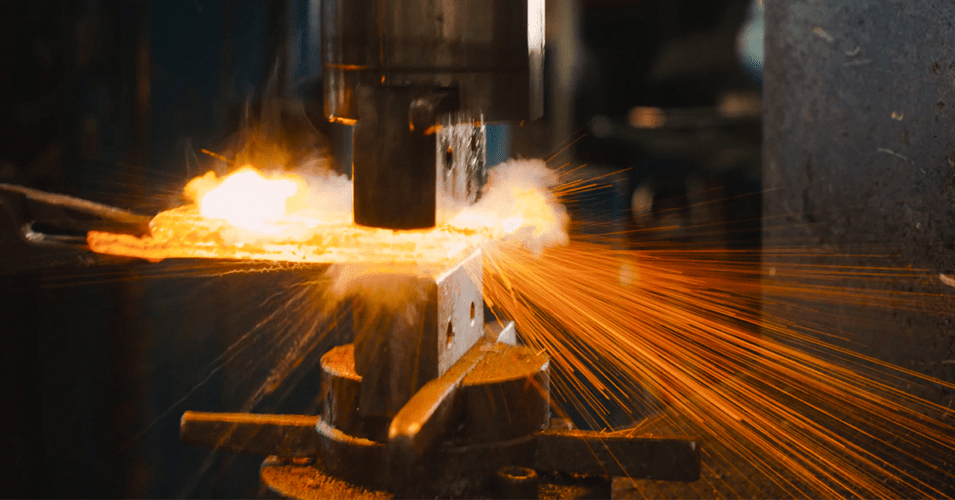When it comes to shaping metal, forging is a time-tested manufacturing process that has been used for centuries. This method involves deforming metal by applying compressive forces, typically in the form of hammer blows or pressurized equipment, to transform raw materials into useful products. While forging can be broadly categorized as either hot or cold, choosing the right method for your project is crucial to achieving the desired results. In this blog, we’ll delve into the differences between hot forging and cold forging and help you determine which is the best fit for your specific application.
Hot Forging: The Basics
Hot forging, as the name suggests, involves working with metal at elevated temperatures, typically above its recrystallization temperature. This method is used for materials like steel, aluminum, and other metals that are easier to deform when heated. The key characteristics of hot forging include:
- High Temperature: Hot forging requires heating the metal to temperatures that vary depending on the material and its properties. This heating process reduces the strength and increases the ductility of the metal, making it easier to shape.
- Reduced Energy Requirements: The elevated temperature reduces the force needed to deform the metal, resulting in less energy consumption during the forging process.
- Better Material Flow: Hot forging allows for greater material flow, enabling complex shapes and intricate designs to be forged with precision.
- Improved Microstructure: The high temperatures can refine the microstructure of the metal, resulting in improved mechanical properties and better resistance to fatigue.
- Shorter Processing Times: Hot forging typically takes less time compared to cold forging since the heated metal is more malleable.
Cold Forging: The Basics
Cold forging, on the other hand, is carried out at or near room temperature. It is suitable for materials that can withstand the deformation without the need for preheating. Key characteristics of cold forging include:
- Room Temperature Operation: Cold forging does not require the material to be heated to high temperatures, which can be advantageous when working with materials that are sensitive to heat or oxidation.
- High Precision: Cold forging is known for its precision and accuracy, making it ideal for applications where tight tolerances are required.
- Improved Surface Finish: Cold forging often produces parts with excellent surface finishes, reducing the need for additional machining operations.
- Enhanced Strength: The cold working process can increase the material’s strength, making it suitable for applications that demand high tensile strength.
- Longer Tool Life: Since the tools are subjected to less thermal stress in cold forging, they tend to have longer lifespans compared to those used in hot forging.
Choosing the Right Forging Method for Your Project
The decision between hot forging and cold forging depends on various factors, including the material being used, the complexity of the part, production volume, and cost considerations. Here are some key guidelines to help you make the right choice:
- Material Selection: Consider the material’s properties and whether it can be forged at room temperature (cold forging) or requires preheating (hot forging).
- Part Complexity: If your project involves intricate shapes or complex designs, hot forging may be more suitable due to its superior material flow capabilities.
- Production Volume: For high-volume production runs, cold forging is often preferred as it offers faster cycle times and reduced energy costs.
- Tolerance Requirements: If your project demands tight tolerances and excellent surface finishes, cold forging may be the better option.
- Cost Analysis: Conduct a cost analysis to determine which method is more cost-effective for your specific project, considering factors such as material and energy costs, tooling expenses, and production time.
- Strength Requirements: If your components need to meet high tensile strength requirements, cold forging can work-harden the material to achieve the desired properties.
In conclusion, the choice between hot forging and cold forging should be made after careful consideration of the material, part complexity, production volume, and specific project requirements. Both methods have their advantages and limitations, and the right decision will ultimately lead to a successful forging process and high-quality end products. So, whether you’re forging automotive components, aerospace parts, or any other metal product, make sure to weigh the pros and cons of hot and cold forging to determine which method aligns best with your project’s goals.
